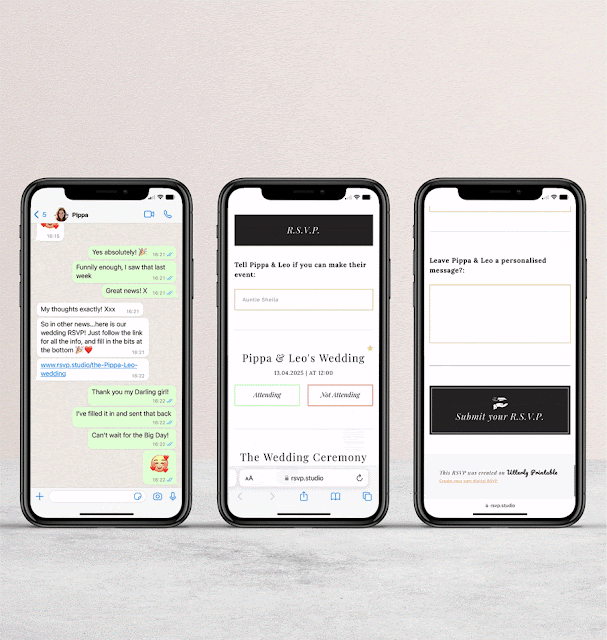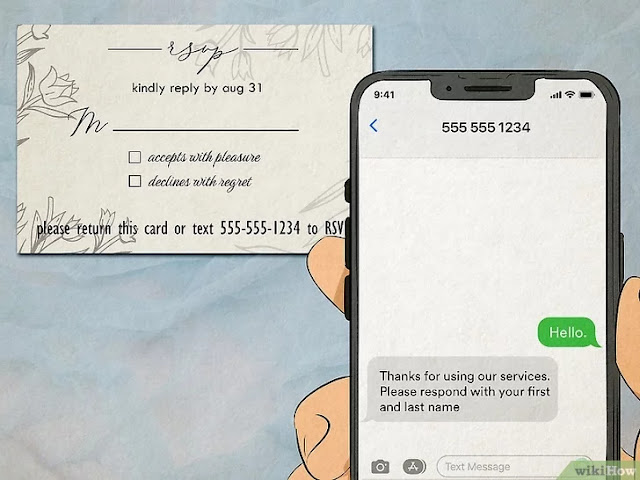.jpg) |
| Effective RSVP Management Tips |
In Indian weddings, where large guest lists are the norm, managing RSVPs can be challenging. From ensuring you have an accurate headcount to accommodating last-minute changes, handling RSVPs efficiently is essential for smooth wedding planning. With the rise of e-invites and digital RSVP links, managing responses has become easier, but there are still specific nuances to consider when planning an Indian wedding. Here’s a detailed guide on managing RSVPs in Indian weddings, ensuring your big day runs smoothly.
1. The Importance of Managing RSVPs
RSVPs (Répondez S'il Vous Plaît, meaning “Please Respond”) are crucial for several reasons in Indian weddings:
- Accurate Guest Count: Knowing exactly how many guests will attend allows you to plan seating, catering, and event logistics with precision.
- Cost Management: The number of guests affects your overall wedding budget, especially in terms of food, seating, and gifts. Managing RSVPs helps you avoid unnecessary costs.
- Vendor Coordination: Vendors like caterers, decorators, and event planners need an accurate count of attendees to ensure they provide the right amount of service.
- Avoiding Last-Minute Chaos: Indian weddings often involve extended families and cultural obligations, leading to last-minute guest additions. RSVPs help you stay organized and prepared for such changes.
2. Sending RSVP Links via E-Invites
With the increasing popularity of e-invites, sending RSVP links is a highly effective way to manage guest responses. Unlike traditional invitations, where guests may forget to send a reply, digital RSVPs provide instant feedback and a streamlined way to keep track of responses.
Benefits of Digital RSVPs:
- Real-Time Tracking: You can easily monitor who has responded, who hasn’t, and follow up with non-responders if necessary.
- Less Paperwork: Digital RSVPs eliminate the need for physical response cards, reducing clutter and making it easier to stay organized.
- Instant Confirmation: Once a guest submits their RSVP online, you get an instant notification, allowing for quicker adjustments in your planning.
Steps for Sending RSVP Links:
Choose an Invitation Platform: Many wedding websites or e-invite platforms, such as WedMeGood or Minted, allow you to send digital invitations with integrated RSVP functionality.
Customize the RSVP Form: Make sure the RSVP link includes relevant questions such as number of attendees, dietary preferences, and event attendance (for multiple wedding events like Mehendi, Sangeet, and Reception).
- Set a Clear Deadline: Specify a date by which guests need to respond. This will help you finalize arrangements in a timely manner and minimize last-minute changes.
3. Multiple Events, Multiple RSVPs
Indian weddings usually consist of several events—Haldi, Mehendi, Sangeet, wedding ceremony, and reception. Each event may have a different guest list, making RSVP management more complex. You’ll need to keep track of who is attending which event.
Tips for Managing RSVPs Across Multiple Events:
Categorize Invitations: Divide your guest list into categories (e.g., close family, extended family, friends, colleagues) and determine which events they will be invited to. Send RSVPs accordingly.
Event-Specific RSVPs: Include RSVP options for each event so that guests can confirm their attendance for individual ceremonies. This ensures that you know exactly how many people will attend each event and can plan accordingly.
- Regular Follow-Ups: For guests who are invited to multiple events, send reminder emails closer to the event date to confirm their attendance. This will help in making final arrangements.
4. Handling Last-Minute Additions and Cancellations
Indian weddings are known for last-minute changes, with guests often requesting to bring extra people or cancelling at the last moment. While it’s inevitable to have some fluctuation, planning ahead can help minimize disruptions.
Strategies to Handle Last-Minute Changes:
Plan for Extra Guests: Always factor in 5-10% more guests than the number of confirmed RSVPs. This gives you flexibility in case additional guests show up without prior notice.
Clear Communication: When sending invitations, make it clear how many people are invited per family or household. Politely ask guests to refrain from bringing uninvited guests.
- Work with Your Vendors: Inform your caterers, venue, and decorators that there may be last-minute changes. Having an open dialogue with your vendors will help ensure they are prepared to handle any fluctuations in guest count.
5. Automating Follow-Ups
Following up with guests who haven’t responded to their RSVPs can be time-consuming, but it’s essential to avoid uncertainties. Automation tools can make this process easier.
Ways to Automate Follow-Ups:
Use RSVP Tracking Tools: Platforms like Zola or WeddingWire offer automated follow-up reminders that can be scheduled. These reminders gently prompt guests to respond if they haven’t already.
SMS and WhatsApp Reminders: For an Indian audience, where WhatsApp is widely used, sending RSVP reminders via WhatsApp messages or SMS can be effective. You can even integrate RSVP links into these messages for instant responses.
Personalized Follow-Ups: For VIP guests like close family and friends, consider following up personally through a phone call or message. This adds a personal touch and ensures they don’t miss out on the celebration.
6. Managing Plus-Ones and Children
Indian weddings often extend invitations to entire families, but sometimes, space or budget constraints mean you need to limit the number of guests. Managing plus-ones and children’s RSVPs can help you stay within your capacity.
Tips for Handling Plus-Ones and Children:
Be Specific in the Invitation: Clearly mention how many people from each household are invited. For example, “Mr. and Mrs. Sharma and children” or “Mr. Sharma and guest.”
Limit Plus-Ones: If your guest list is already large, consider limiting plus-ones to only married couples or close friends.
- Separate RSVP for Children: If you’re having a child-free wedding or limiting the number of children, make this clear in the RSVP options.
Managing RSVPs in an Indian wedding might seem like a daunting task, but with the right strategies, it can be done efficiently. From sending digital RSVP links to handling last-minute changes, staying organized will ensure a smooth and stress-free experience. By keeping track of your guest count, maintaining clear communication, and utilizing digital tools, you can create a seamless RSVP management process that leaves everyone happy and excited for the big day!


.jfif)
















0 Comments